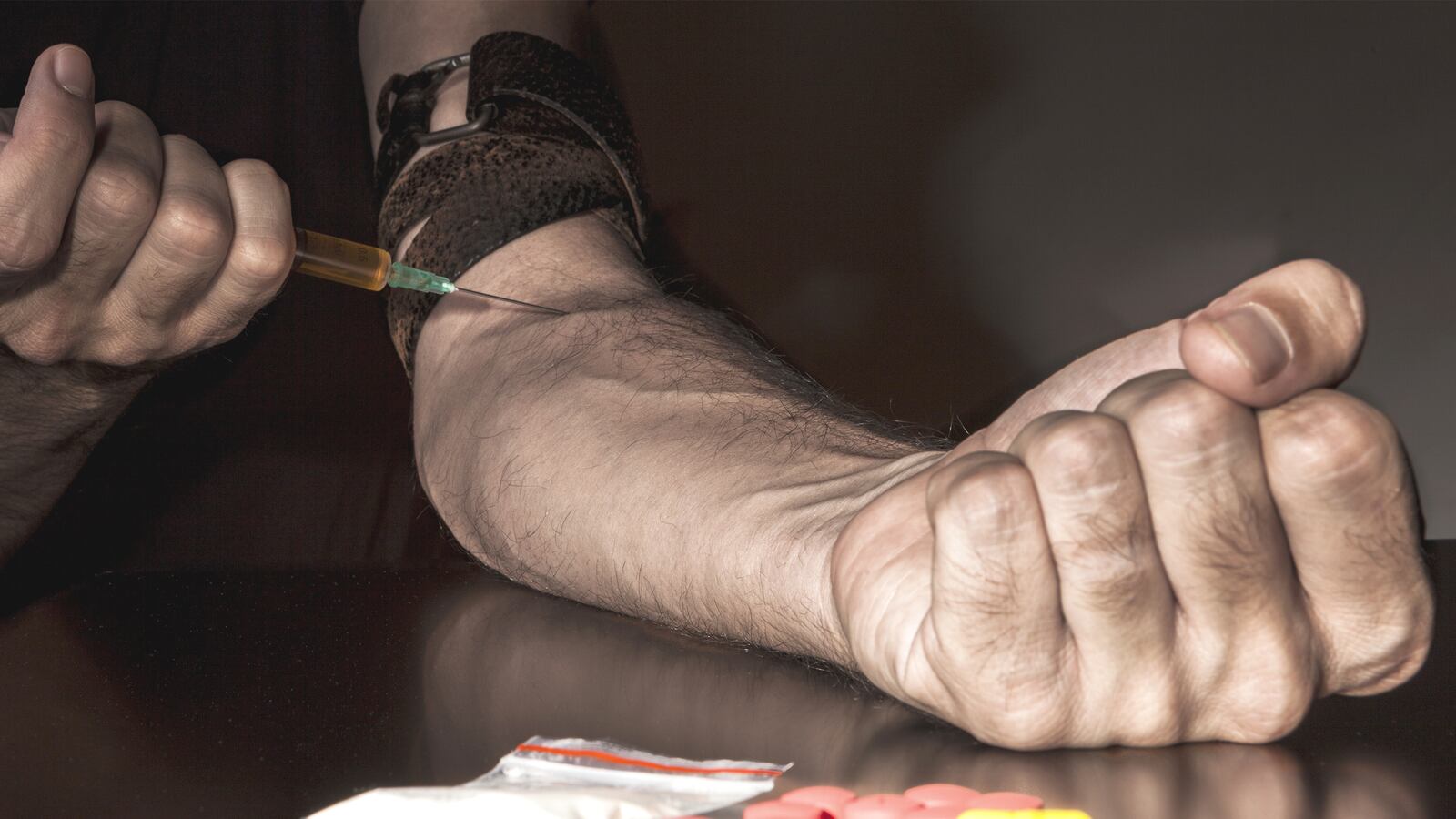In response to the quadrupling of heroin overdose deaths from 2002 to 2013, the White House unveiled a multimillion-dollar plan Monday that will, among other things, target the black market where it is sold.
It’s a great start to curbing America’s heroin epidemic, but as a plan to address the opioid epidemic as a whole, it may be missing the point.
According to the latest National Survey on Drug Use and Health, twice as many people are addicted to prescription painkillers (1.2 million) as heroin (roughly 500,000), and twice as many die from them each year. From 1997 to 2011 alone, there was a 900 percent increase in people requesting treatment for opioid addiction, and it’s now the second-most abused drug among teens.
Legal and proven to have medical benefits, painkillers are seen as safe and effective. Yet they kill 46 people per day in the U.S.—more than two an hour. Those who can no longer afford or obtain painkillers, which run $40 a pop on the black market, turn to heroin—often $5 a bag.
Until medicine finds a solution to chronic pain, crackdowns on one drug will likely serve only to increase the use of the other.
***
In a statement released Monday, the Office of National Drug Control Policy outlined the $5 million plan to target the “trafficking, distribution and use of heroin” —$2.5 million of which it will use to create a “Heroin Response Team.” The program is a part of a $13.4 million fund given to a division of the Drug Enforcement Administration known as the High Intensity Drug Trafficking Areas (HIDTA).
The HIDTA was launched by Congress as a part of the 1988 amendment to Ronald Reagan’s Anti-Drug Abuse Act of 1986, with the goal of stopping the influx of illegal drugs. On its website, the DEA says the program “provides assistance to Federal, state, local, and tribal law enforcement agencies operating in areas determined to be critical drug-trafficking regions of the U.S.”
The mission of the heroin intervention follows that model. Combining state, local, and federal law enforcement in 15 states, it aims to forge public safety and public health partnerships across 15 states. The money will be used to educate, provide medicine to prevent overdoses, and offer tools to infiltrate drug networks. If effective, the rise in heroin use nationwide may very well come to a halt. But winning that battle won’t win the war. Missing from the plans are additional programs to address not only the continued abuse of prescription pain pills, but the larger problem of chronic pain.
With pictures of dirty syringes and bubbling brown liquid, heroin has long been cast as a dirty and extremely lethal drug. Prescription painkillers, prescribed by doctors and delivered in small plastic bottles, have not. But under the guise of medical safety, they kill twice the amount of people as heroin. In 2013 alone, 16,000 people died from a prescription painkiller overdose.
According to the latest SAMSHA survey, the vast majority of pain pills are obtained legally. In 2010 (the most recent year for which there is data) 54 percent of the 5.1 million people who abused prescription painkillers were given them by friend or relative who was prescribed, 18 percent were prescribed themselves, and nearly 17 percent bought them from someone they knew. Just 3.9 percent obtained them from a drug dealer.
The numbers cast doubt on statements from Office of National Drug Control Policy President Michael Botticelli claiming that the drug-trafficking program will also address the over-prescription of pain pills. “The new Heroin Response Strategy demonstrates a strong commitment to address the heroin and prescription opioid epidemic as both a public health and a public safety issue,” Botticelli said Monday.
But if the feds go looking for painkillers on the black market, they won’t find them. In 2012 alone, doctors prescribed 259 million painkillers—enough doses to medicate every American, every four hours, for a month. At just 5 percent of the world’s population, we consume the most opioid painkillers in the world—twice that of Canada, the next closest country.
While new regulations on prescriptions have since been put in place, their efficacy is unclear. A report from February found them to actually have adverse effects, leaving thousands of veterans without the drugs they need to survive. A study released in the American Journal of Public Health this month found “significant gaps” remaining at both state and national levels to address opioid addiction.
Others like the Centers for Disease Control and Prevention have launched programs to combat prescriptions of pain pills, but thus far has only implemented theirs in five states. This July, the American Medical Association announced plans to enter the fight too, with drug-monitoring programs to track prescriptions.
But neither those programs—nor the White House’s—will get to the root of the problem: chronic pain. An estimated 100 million Americans suffer from chronic pain each year, a problem that costs the U.S. an estimated $600 billion a year in medical treatments. Curbing heroin addiction cannot be done without addressing prescription painkillers, and neither can be stopped without a new solution to chronic pain.






